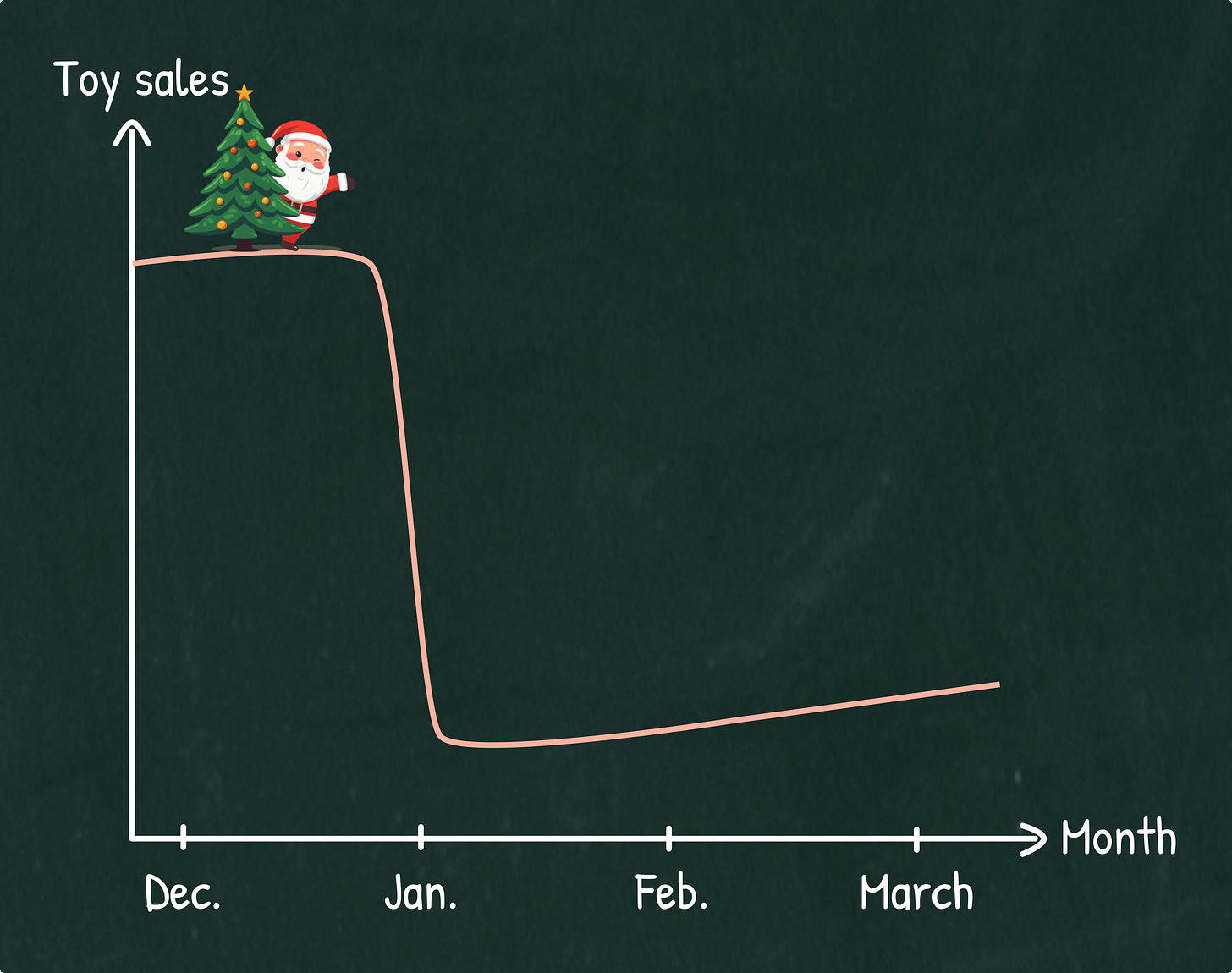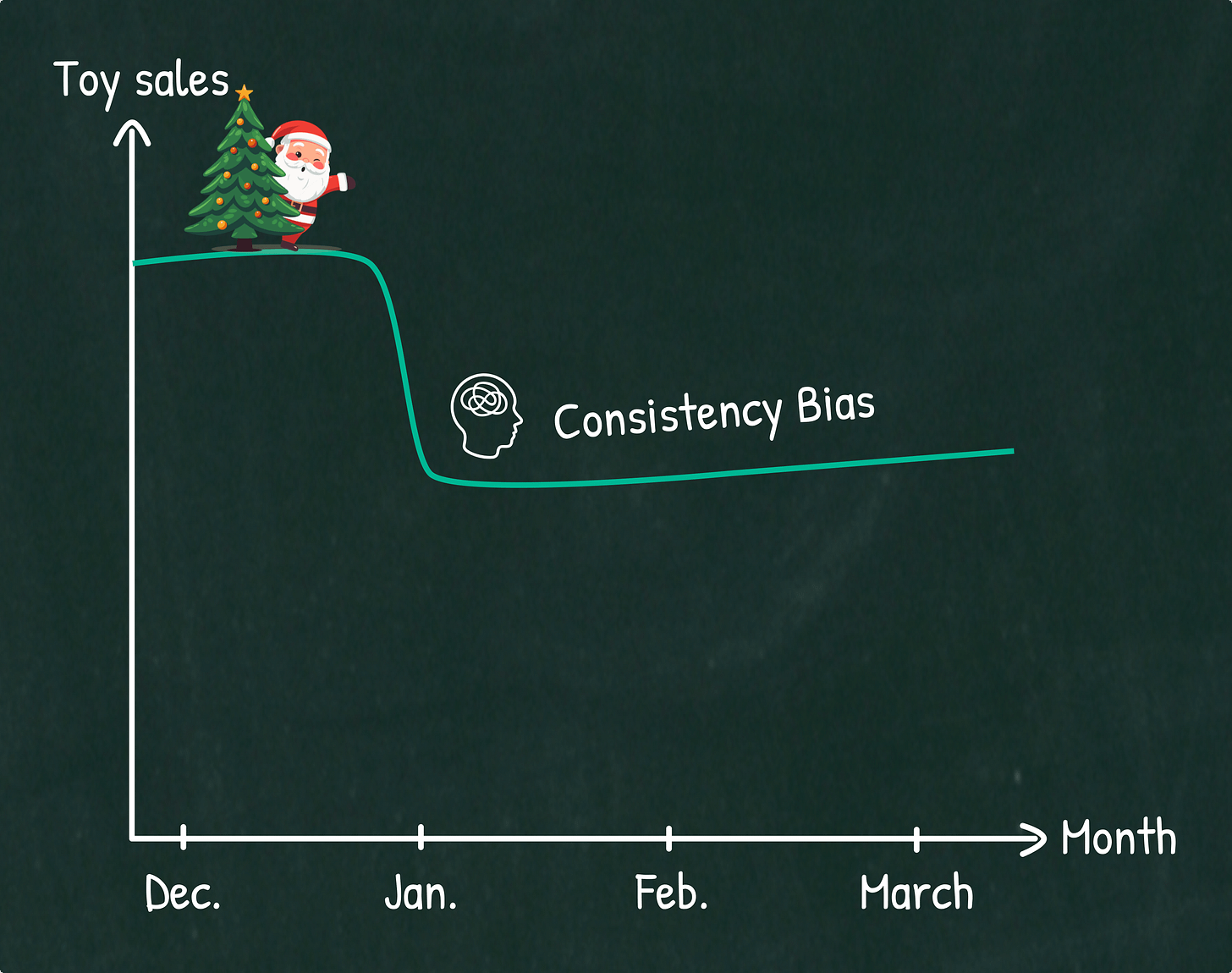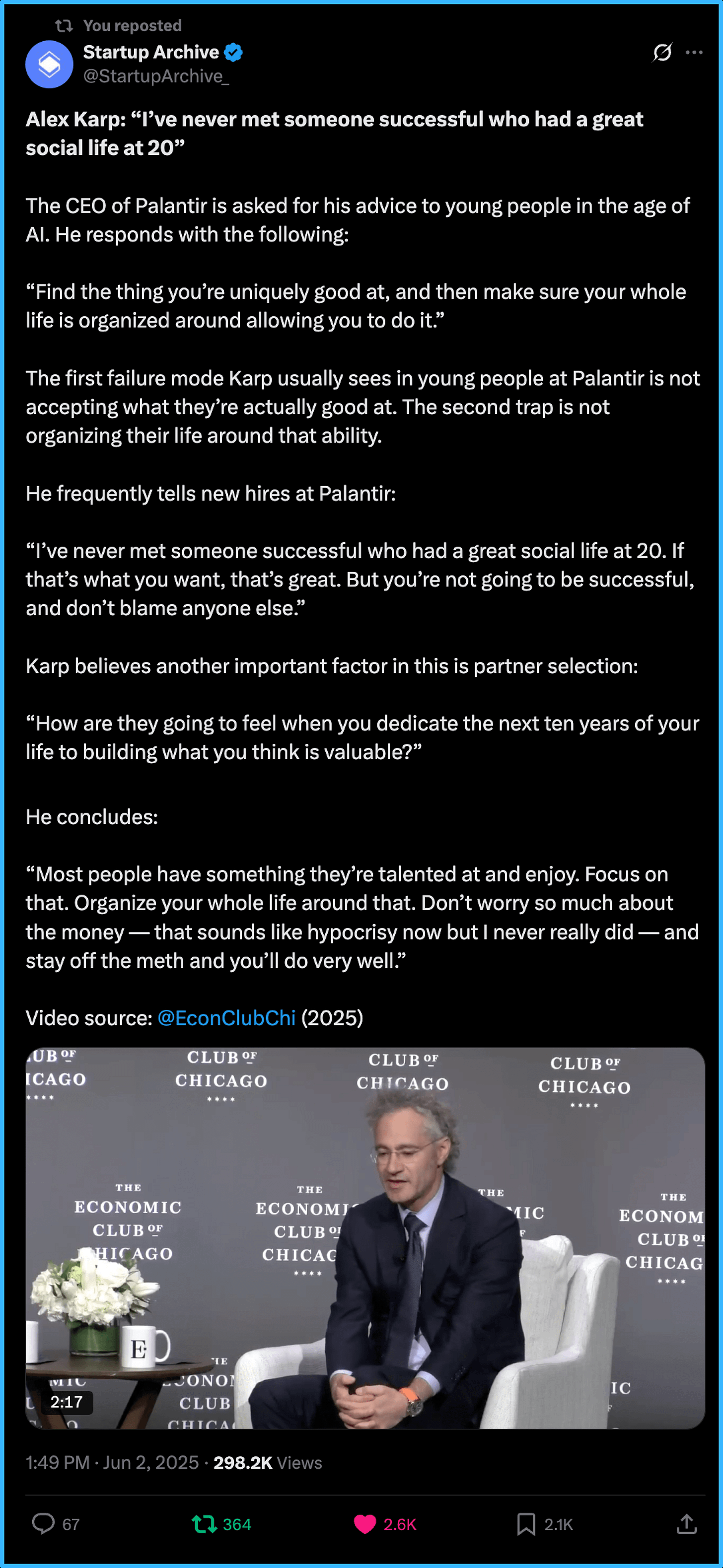How Toy Stores are Using the Consistency Bias to Boost their Sales!
Nugget by Dr. Robert B. Cialdini
Friend, this has to be the most powerful use of the Consistency Bias I’ve ever encountered.
It’s on the book Influence (by Robert Cialdini) and it’s a real story of how several of the big toy manufacturers use the Consistency Bias against parents to smooth the sharp drop of demand in January and February — after parents have overspent their toys budget in Christmas.
A bit of context...
- Robert Cialdini has been highly praised by Charlie Munger, Warren Buffet, Naval Ravikant and Mohnish Pabrai. Those invaluable references got me curious about his work on Human Psychology!
- The Consistency Bias makes humans have a tendency to be consistent with previous commitments, beliefs, ideas and actions. Particularly when they expressed that commitment (or belief or idea or action) in public. Sales professionals (or any compliance professional, such as politicians, lawyers, fundraisers, etc.) take advantage (often unethically) of this human bias to increase profit, so it's important that we are aware of it!I was honestly shocked when I read it.
And what I can guarantee you is that after reading it you will never again underestimate the power of the Consistency Bias, and it’s subtleness to go completely unnoticed.
Also, whenever you think about the Consistency Bias again you can recall this crazy real life story (because stories are much more memorable than raw concepts, and even more when that story leaves you utterly speechless!).
👤 Doers
💡Nugget
🟠 Robert Cialdini:
Certain large toy manufacturers use just such an approach to reduce a problem created by seasonal buying patterns. Of course, the boom time for toy companies occurs before and during the Christmas holiday season. Their problem is that toy sales then go into a terrible slump for the next couple of months. Their customers have already spent the amount in their toy budgets and are stiffly resistant to their children’s pleas for more.
The toy manufacturers are faced with a dilemma: how to keep sales high during the peak season and, at the same time, retain a healthy demand for toys in the immediately following months? The difficulty certainly doesn’t lie in motivating kids to want more toys after Christmas. The problem lies in motivating postholiday spent-out parents to buy another plaything for their already toy-glutted children. What could the toy companies do to produce that unlikely behavior? Some have tried greatly increased advertising campaigns, while others have reduced prices during the slack period, but neither of those standard sales devices has proved successful. Both tactics are costly and have been ineffective in increasing sales to desired levels. Parents are simply not in a toy-buying mood, and the influences of advertising or reduced expense are not enough to shake that stony resistance.
Certain large toy manufacturers think they have found a solution. It’s an ingenious one, involving no more than a normal advertising expense and an understanding of the powerful pull of the need for consistency. My first hint of the way the toy companies’ strategy worked came after I fell for it and then, in true patsy form, fell for it again.
It was January, and I was in the town’s largest toy store. After purchasing all too many gifts there for my son a month before, I had sworn not to enter that store or any like it for a long, long time. Yet there I was, not only in the diabolical place but also in the process of buying my son another expensive toy—a big, electric road-race set. In front of the road-race display, I happened to meet a former neighbor who was buying his son the same toy. The odd thing was that we almost never saw each other anymore. In fact, the last time had been a year earlier in the same store when we were both buying our sons an expensive post-Christmas gift—that time a robot that walked, talked, and laid waste to all before it. We laughed about our strange pattern of seeing each other only once a year at the same time, in the same place, while doing the same thing. Later that day, I mentioned the coincidence to a friend who, it turned out, had once worked in the toy business.
“No coincidence,” he said knowingly.
“What do you mean, ‘No coincidence’?”
“Look,” he said, “let me ask you a couple of questions about the road-race set you bought this year. First, did you promise your son that he’d get one for Christmas?”
“Well, yes, I did. Christopher had seen a bunch of ads for them on the Saturday-morning cartoon shows and said that was what he wanted for Christmas. I saw a couple of ads myself and it looked like fun, so I said, OK.”
“Strike one,” he announced. “Now for my second question. When you went to buy one, did you find all the stores sold out?”
“That’s right, I did! The stores said they’d ordered some but didn’t know when they’d get any more in. So I had to buy Christopher some other toys to make up for the road-race set. But how did you know?”
“Strike two,” he said. “Just let me ask one more question. Didn’t this same sort of thing happen the year before with the robot toy?”
“Wait a minute . . . you’re right. That’s just what happened. This is incredible. How did you know?”
“No psychic powers; I just happen to know how several of the big toy companies jack up their January and February sales. They start prior to Christmas with attractive TV ads for certain special toys. The kids, naturally, want what they see and extract Christmas promises for these items from their parents. Now here’s where the genius of the companies’ plan comes in: they undersupply the stores with the toys they’ve gotten the parents to promise. Most parents find those toys sold out and are forced to substitute other toys of equal value. The toy manufacturers, of course, make a point of supplying the stores with plenty of these substitutes. Then, after Christmas, the companies start running the ads again for the other, special toys. That jacks up the kids to want those toys more than ever. They go running to their parents whining, ‘You promised, you promised,’ and the adults go trudging off to the store to live up dutifully to their words.”
“Where,” I said, beginning to seethe now, “they meet other parents they haven’t seen for a year, falling for the same trick, right?”
“Right. Uh, where are you going?”
“I’m going to take the road-race set right back to the store.” I was so angry I was nearly shouting.
“Wait. Think for a minute first. Why did you buy it this morning?”
“Because I didn’t want to let Christopher down and because I wanted to teach him that promises are to be lived up to.”
“Well, has any of that changed? Look, if you take his toy away now, he won’t understand why. He’ll just know that his father broke a promise to him. Is that what you want?”
“No,” I said, sighing, “I guess not. So, you’re telling me the toy companies doubled their profits on me for the past two years, and I never even knew it; and now that I do, I’m still trapped—by my own words. So, what you’re really telling me is, ‘Strike three.’”
He nodded, “And you’re out.”
If you want to learn more about the Consistency Bias and other principles of persuasion, check out the book Influence and also the in-depth study guide on Shortform! They have a breakdown of each chapter of the book (covering each principle) and even exercises to consolidate your learning.
I personally use Shortform to quickly discover and learn the best ideas from thousands of non-fiction books, and it’s been invaluable for boosting my rate of learning!
👉 Get your 5-day free trial and 20% off with my link - shortform.com/littlealmanack
✍️ New Essay
I recently co-authored (with Brian David Crane) an essay in which we explored the differences between Skepticism and Cynicism. After writing this piece, I realized that identifying this difference is key to get what you want out of life. Because while Cynicism keeps you down, the right mix of Skepticism and Optimism can get you to higher highs consistently. More specifically, being an optimist in the general and a skeptic in the specifics is the right mix.
The essay is grounded on the ideas of Naval Ravikant, John D. Rockefeller, Jeff Bezos, Jim Rohn, Chris Williamson, and Ray Dalio. Talk about standing on the shoulders of giants! 😂
👉 If you are curious, you can read the full piece here (for free) - https://spreadgreatideas.org/contrasts/skepticism-vs-cynicism/
💥 Stuff I Loved
I got sooo many nuggets from this interview.
If you haven’t heard of Matt Mochary, he has been retired for a few decades (after selling his company) and now he coaches top founders and CEOs such as Naval Ravikant and Brian Armstrong.
The story of Forrest Mars is fascinating!
Talk you soon!
Julio :)













